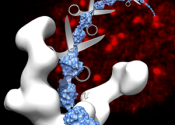Probotic-containing yogurt protects against microbiome changes that lead to antibiotic-induced diarrhea
Eating yogurt containing a particular strain of a well-studied probiotic appears to protect against harmful changes in the gut microbiome that are associated with antibiotic administration. That is the finding from a new ...
Sep 14, 2021
0
12








